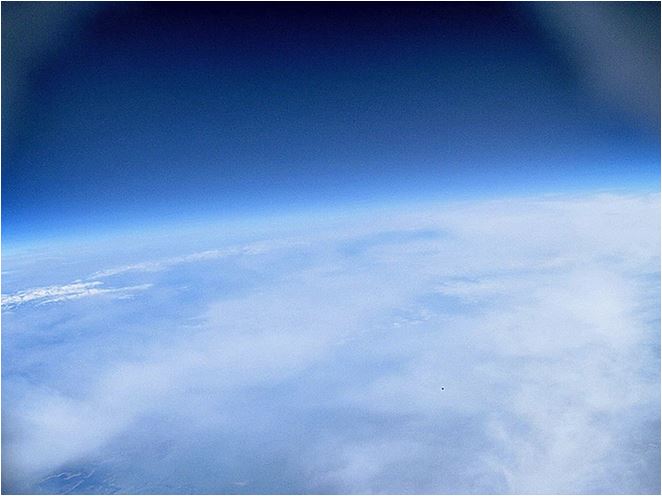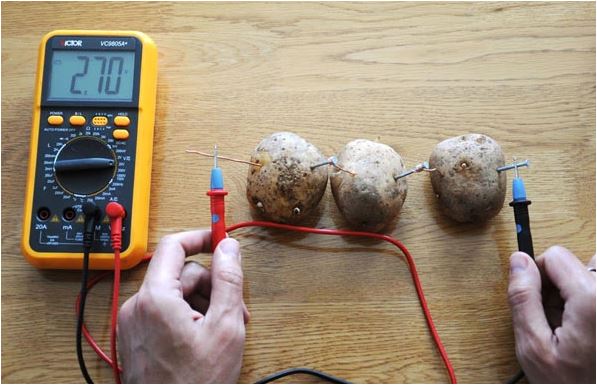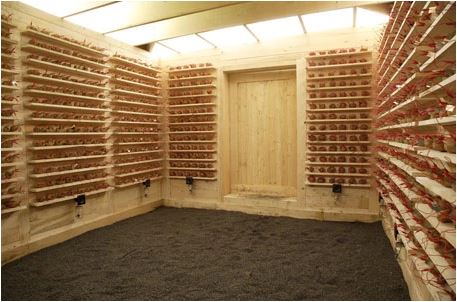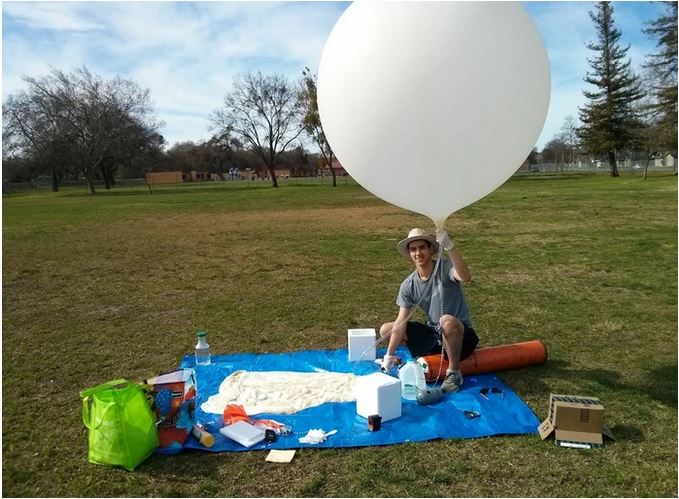Over the past few years, we’ve seen some high-altitude weather balloons travel up to 100,000 feet above the Earth into “near space” and take some fabulous photos.
 View captured by Webster's previous near-space balloon mission.
View captured by Webster's previous near-space balloon mission.
What we haven’t seen is a near-space mission powered completely by potatoes— until now.
A group of engineers led by software engineer Ian Webster, is working on a plan to use potatoes to power the electronics used in near space missions. During previous missions, they used lithium batteries to power their electronics, but since potatoes can also generate power, they decided to try something different.
According to the group’s Kickstarter page, “No one has ever powered a near-space flight using a potato.”
How it works
A potato can be converted into an electromechanical battery by using copper and zinc electrodes attached to a wire and a nail.
 How the potato battery works.
How the potato battery works.
The battery does not require a lot of watt-hours. Instead the team simply wants to maximize the battery to produce a lot of amp-hours, but the final configuration of the battery isn't set in stone yet.
“Our theory is that fingerling potatoes with a nail running lengthwise through the body would probably be the best Amp-Hour/Kg configuration,” wrote the Webster.

Outline of the near-space balloon powered by a potato.
According to the team’s Kickstarter page, boiled potatoes produce ten times more power than raw potatoes and it’s even possible to power a room for an entire month on only potato power.

A room powered by potatoes.
Webster always joked with his friends about powering a satellite with a potato.
“I don't think a potato-powered satellite is realistic, but a high-altitude balloon is a lot cheaper so I figure it's worth a shot,” said Webster.
The entire project would consist of a balloon, parachute and a payload. The payload will contain a camera that can take pictures of Earth from 100,000 feet, a tracking device to recover the balloon and camera and a potato battery which will provide electricity during the flight.

Filling up the balloon.
The team is aware of the possibility that the mission will go wrong: the balloon may not be recovered, pictures may not develop well, and there’s no guarantee against sudden bad weather or birds, but if you’re interested in supporting the project, visit the team’s Kickstarter page. The funding goal for this project is $1,200. The team has just under $300 remaining to achieve this.
“Although the temperatures sound like a huge challenge, my experience from past high altitude flights has taught me that the interior of our insulated payload actually remains quite warm. So I think the potato batteries have a chance,” said Webster.
For more information regarding Ian Webster’s past projects and work visit his website.
Advertisement
Learn more about Electronic Products Magazine





